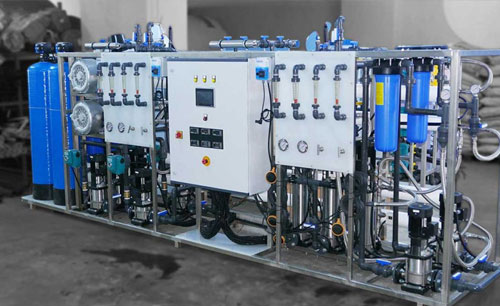Wastewater treatment begins with the removal of suspended matter. Depending on the quality of the water, flocculation may also be required to ensure effective filtration. Then the water undergoes various other processes. These may include chemical precipitation, lime-soda softening, reverse osmosis, and deaeration.
Depending on the location of your home, you might have to purchase an STP to handle your sewage. Generally, residential buildings need at least one STP to treat sewage. Many STPs are located underground, making them difficult to maintain. Moreover, you may not be able to inspect them without hiring an expert. It is better to consult a professional if you have any doubts about the process.
Chemical treatment
Chemical treatment of wastewater produced in boilers is an important part of boiler maintenance. Leaving boiler feedwater untreated can lead to fouling and corrosion. Chemical treatment of boiler feedwater can help improve overall plant efficiency. It can also save money on chemical costs. The treatment process involves several steps.
First, the boiler feed water must be de-aerated. Then, the chemical feed pump should be activated. Then, the chemical treatment must be added over a twenty-four-hour period. Avoid slug-feeding the chemical feed water, which may lead to high amine concentrations. In addition, the chemical feed water must be alkaline to support the formation of a stable magnetite layer on the water-side surface of the boiler. Using sodium hydroxide (caustic soda) or ammonia to increase the alkalinity of the feed water is usually recommended. The presence of dissolved salts, carbon dioxide, and oxygen in boiler feed water is a major cause of corrosion.

To reduce phosphate levels, a polymer is added to the mixture. This polymer acts as a dispersant and prevents the precipitated and soluble materials from building up. Eventually, the phosphate treatment products will form sludge and settle in the upper and lower drums of the boiler. Blowdown and intermittent mixing with a conductivity controller can be used to remove sludge from the boiler.

Polymer treatment
The polymers used in boiler water treatment should be added to the boiler's aqueous system in a controlled amount to achieve the best results. The amount of polymers required will depend on the system, the area to be treated, and the concentrations of various ions.
These polymers are water soluble and can separate the suspended solids from the liquid in minutes. The applications for polymers are endless. Not only do they help to clarify wastewater, but they also help save time and energy. More industries around the world recognize the benefits of polymers, and the benefits of using them are being discovered.
Boiler water polymer treatments use organic molecules that are susceptible to degradation when exposed to high concentrations of oxygen. This degradation can occur due to boiler systems' thermal and oxygen pressure. Unfortunately, most water treatment facilities do not regularly test polymer residue in the boiler feed water, which can be a costly mistake. Fortunately, many of these products are now available in multiple concentrations, making it easier to control the amount of chemicals needed for different-sized systems. For example, a typical boiler sludge conditioner can be maintained at 200 ppm as a product in the boiler water, which is a suitable level for a boiler that produces 20,000 pounds of steam per hour and goes through fifteen feedwater cycles.
Phosphates-dispersants
Phosphates-dispersants are chemical compounds that are commonly used in the process of treating wastewater produced in the boiler feed water. They work to disperse sludge and prevent its re-clogging. These compounds can be applied continuously or periodically. Phosphates-dispersants can be used to treat boiler feed water and reduce the water's hardness. These compounds are also used as oxygen scavengers to reduce dissolved oxygen and oxides. They can also passivate metal surfaces.
Phosphates-dispersants are used to treat boiler feed water to reduce the concentration of phosphates. The ratio of sodium phosphates in the boiler feed water is determined by pH and phosphate content. When the ratio is less than three, the solid phase contains a significant amount of sodium hydroxide. Depending on the pH and temperature of the boiler feed water, the phosphates-dispersants may be diluted to the desired level.
Chlorine neutralization
Chlorine neutralization is a process used to remove chlorine from wastewater. It is also used to protect boiler components and surfaces from corrosion. The process is carried out by heating boiler feed water above 212degF. The remaining chlorine is referred to as chlorine residual. Chlorine is a known carcinogen.
Chlorine neutralization can be accomplished using two processes. One is an internal treatment method, which removes impurities from the feed water, and another is an external treatment. Both methods will reduce dissolved oxygen levels in boiler-feed water and soften it. External treatment is preferred when the feed water contains a high concentration of suspended matter. On the other hand, the internal treatment effectively removes sludge and suspended matter from the feed water.
Chlorine neutralization involves adding alkaline materials to the feed water to reduce acidity. These materials can help protect boiler feed water against corrosion due to acidic substances. However, the amount of alkalinity builders used depends on the pH level of the feed water.
Deaeration
Deaeration is a key part of boiler feedwater treatment, as it removes corrosive gases from the water. It also protects boiler equipment by reducing dissolved oxygen levels in the water. Dissolved oxygen in water is a cause of corrosion and pitting and can erode steel surfaces.
Deaeration works by removing the oxygen and CO2 in water. It does this by stripping non-condensable gases from the water and releasing them through a venting section. The deaerated feedwater is then pumped into the boiler.
Boiler feedwater is usually treated with additional chemicals after deaeration. This is necessary because there are solids in the water, such as calcium and magnesium compounds. Taking these solids out of boiler feedwater reduces the risk of scale formation. When solids are trapped in boiler feedwater, they become attached to the heat transfer surface. This causes scale, which forms on the internal surfaces of boiler drums and tubes.







































Share Post